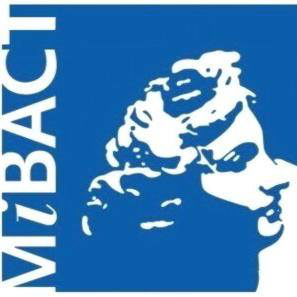Summary (English)
The excavations are part of a long-term project, which through research within the territory aims gradually to formulate and implement the best ways to enhance the site and open the extraordinary monumental complex of the river port at Aquileia to visitors.
As is known, the archaeological area is characterised by the presence of monumental remains excavated and mostly left visible by Giovanni Brusin in the 1920s and 30s. This area, linking the forum and the eastern edge of the town on the river, constituted one of the hubs of the urban layout and of the functional organisation of Aquileia in the Roman period. The city walls also passed through here in various phases of its life, from the earliest times onwards.
The trench investigated two separate archaeological contexts, to the west and east of the western wall of the warehouse, covering a total surface area of c. 300 m2. The earliest evidence was the Republican city wall, of which the crest of the razing was exposed, but it was not possible to investigate the foundation levels due to the constant presence of water, both from rain and the water-table. Once it was no longer a defensive structure, the wall remained standing for a long period, acting an element of reference for a series of successive structures that abutted it. These included, on the east side, structures that may have been residential and were certainly earlier than the warehouse construction as they were cut by its perimeter wall. In particular, a room with an opus spicatum floor, later obliterated by a white mosaic floor during a phase of structural changes. A floor of terracotta tesserae with pseudo-emblemata, of a type that was widespread in Aquileia especially during the Julio-Claudian and Hadrianic periods, can also be attributed to this phase of structural alterations.
The excavation was opened in the north-western part of the complex, south of the northernmost paved road, which from the quayside climbed up towards the city. The area to be investigated was chosen based on the known bibliography and archive documents. Here, Brusin had uncovered not only a series of structures that are still visible – the wall of the westernmost warehouse and, to the east, other walls and a line of foundations for pillar bases -, but also the Republican city wall and a series of remains that are no longer visible but documented by Brusin and only partly published. This evidence attests different phases, presumably earlier than the warehouse building. Therefore, the excavations aimed to expose the situation that emerged in past excavations in order to check the stratigraphic relationships between the various structures and acquire elements regarding their dating and function.There followed a period of disuse, prior to the construction of the warehouses; the relative stratigraphy provided interesting dating material for the construction of the building, which seem to indicate the Flavian period or slightly later. So far, it has not been possible to investigate the fill of the perimeter wall’s foundation trench, which was only identified. The continuation of the excavations could reveal further elements to be checked in this regard, and the dating evidence for a series of structures, including a row of bases for a portico, identified on the western edge of the trench, in the area outside the warehouses.
- Cristiano Tiussi-Fondazione Aquileia
- Paola Maggi-Università di Trieste presso l’ERPAC, Fondazione Aquileia
Director
- Cristiano Tiussi-Fondazione Aquileia
Team
- Dario Gaddi, Luca Villa
- Rita Auriemma- ERPAC - Ente Regionale Patrimonio Culturale del Friuli Venezia Giulia – Servizio catalogazione, formazione e ricerca
- Ella Zulini
- Marta Marcolina-l’Università degli Studi di Udine
- Paola Maggi-Università di Trieste presso l’ERPAC, Fondazione Aquileia
- Massimo Braini
Research Body
- Fondazione Aquileia, ERPAC
Funding Body
- Fondazione Aquileia, ERPAC
Images
- No files have been added yet




